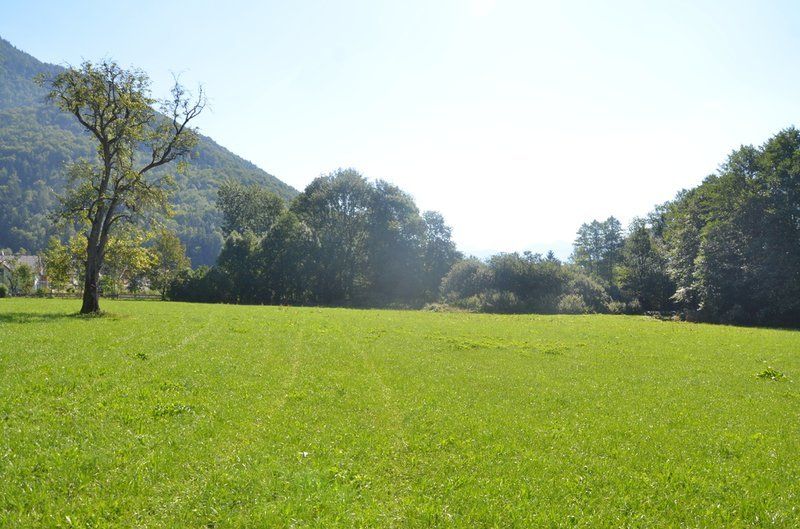Agriculture and nature
A good 85 percent of the total area of 83,850 km2 in Austria is used for agriculture and forestry. In the Alps and in the foothills of the Alps in particular, livestock and dairy farming are predominant, while arable farming predominates in the northern flat and hill countries, in Lower Austria and in Burgenland.
There are a total of around 170,000 farms, of which around 100,000 are grassland with animals that consume roughage and the remaining 70,000 are growing arable, vegetable, wine and fruit crops. As a rule, these are small farms run by individual farmers who cultivate an average of around 70 hectares.
When it comes to ecological agriculture, the Alpine republic is a pioneer and model country. The number of organic farms is 22,000 and is the world leader with a 17 percent share of all agricultural companies. When it comes to the use of the entire agricultural area for organic production, Austria ranks third behind the Falkland Islands (36.3 percent) and Liechtenstein (31 percent) with 19.5 percent, and in some regions the percentage is almost 50 percent achieved.
The promotion of the ecology of the small-scale agriculture in the Alpine republic goes back, among other things, to the country's agricultural policy, which promotes this development with organic action programs. But it is also thanks to the commitment of many small farmers who, like the operators of the FISCHERGUT in St. Wolfgang, are committed to practicing natural, environmentally friendly and sustainable agriculture.
The small-scale structure of Austria differs significantly from the predominantly large-scale agriculture in other Central European countries. In Germany, for example, which is the largest milk producer in the European Union, there are 89,000 farms that only keep cows, for a total of 4.2 million. In the new federal states in particular, there are large farms with more than 300 stable animals, which, in addition to conventional feed such as grass or silage - grass clippings made durable through fermentation - also receive concentrated feed such as rapeseed or soy meal.
But in the meantime - as in many other countries - a slow rethink has begun. In Sweden it is already a legal requirement to let the animals graze outdoors in summer; other countries offer financial incentives for this. The number of organic farms and organically farmed areas is also constantly increasing.
In Germany, for example, the share of organic producers in total agriculture was 1.3 percent in 1996 and rose to 8.2 percent by 2013. The organically farmed area also recorded an increase from 2.1 to 6.4 percent in the same period, which is, however, significantly lower compared to the figures for Austria.
As has long been the norm in the Alpine republic, there are more and more companies in Germany that market their organic products directly and also offer farm holidays, although there is still a lack of clearly organized structures and projects in some respects. In Austria, on the other hand, 1,600 farm direct marketers have now joined forces under the label "Gutes vom Bauernhof", which stands for guaranteed, tested quality and which also distinguishes the exquisite LAMB and SHEEP SALAMI from FISCHERGUT.
One reason for the trend towards more ecological agriculture can be seen in the increased global demand from consumers, who are increasingly turning away from the conventional agricultural industry as a result of food scandals such as rotten meat and increased health awareness. In addition, images of cruel factory farming have certainly startled many people and made them think about a conscious and responsible life.
In addition, the consequences of the worldwide destruction of nature by ruthless businessmen in the agricultural sector are now also visible. One example of this is the clearing of the rainforests in South America, which is intended to make space for gigantic soy monocultures from which cattle feed is made for export to be fed to cows in factory farming.
Environmental damage such as the decline in biodiversity can also be seen in different regions of Germany, where stable keeping dominates and grassland that is grazed or treated with different mowing times is shrinking. Furthermore, in corn-growing areas that produce special food for high-performance cows, nitrate pollution of the groundwater and overfertilization of lakes as a result of the use of pesticides and other agents has been demonstrated.
These examples show how great the influence of the agricultural sector is on nature and that it can both destroy and maintain it. And since natural resources cannot be exhausted indefinitely, intensive agriculture, which uses extreme methods to improve the performance of animals and plants, can only fail in the end, while extensive agriculture, which follows ecological principles, becomes increasingly important comes to.












